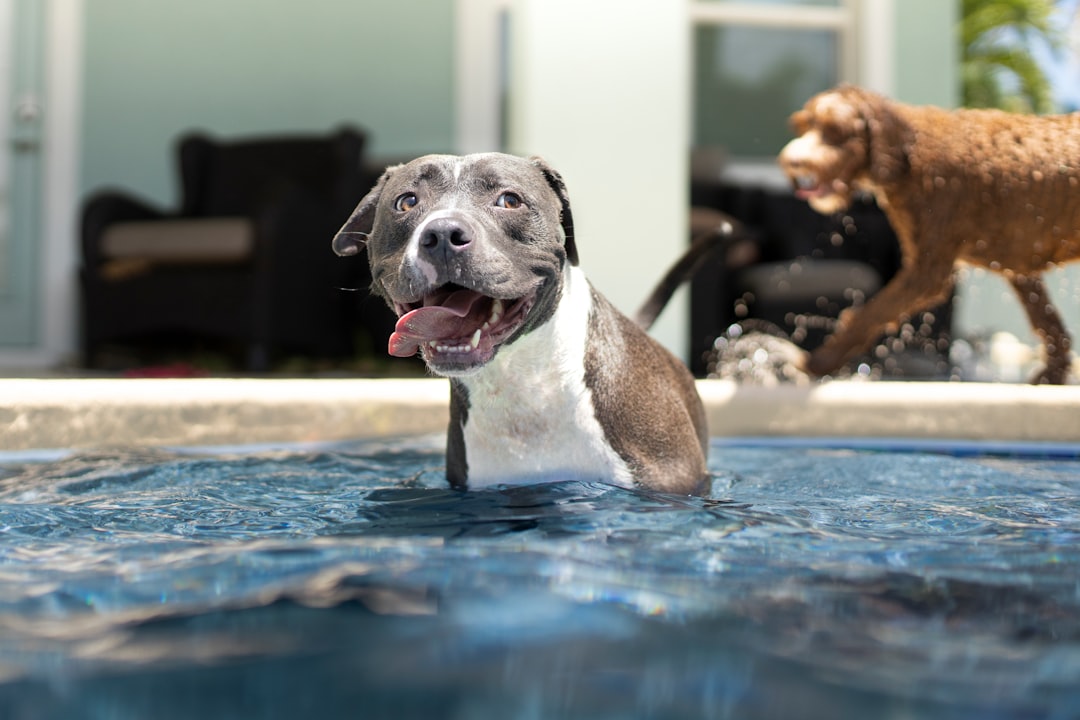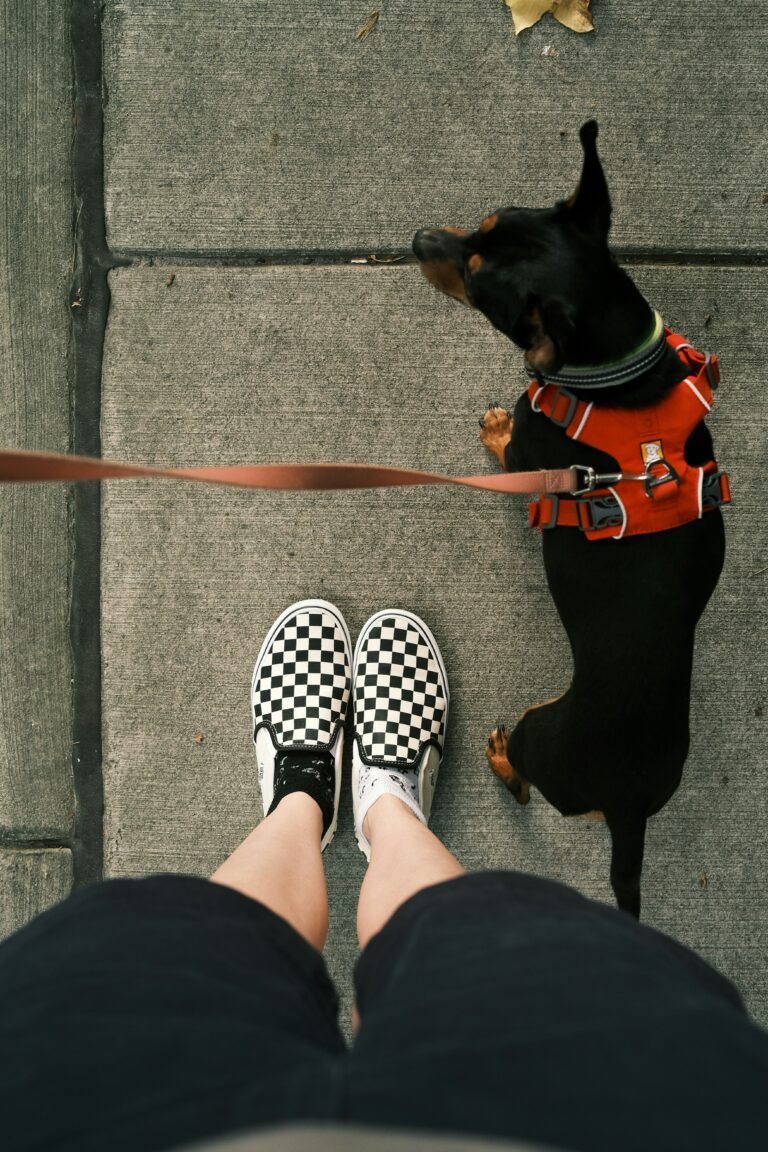The Ultimate Guide to Water Safety for Your Canine Companion
The Ultimate Guide to Water Safety for Your Canine Companion
Water Safety for Dogs: The Ultimate Guide to Water Safety for Your Canine Companion.
Importance of Water Safety for Dogs
The Ultimate Guide to Water Safety for Your Canine Companion. Water safety for dogs is of paramount importance to ensure their well-being and enjoyment of water activities. Swimming is not only a fun activity but also a mentally and physically stimulating exercise for dogs. It provides them with an opportunity to expend their energy, stay active, and maintain a healthy lifestyle. Breeds like Labrador Retrievers and Newfoundlands are known for their natural swimming abilities. They enjoy the water and engaging in water-related activities with enthusiasm. However, it’s crucial to remember that not all dogs are natural swimmers. Some dogs may require additional support and training to feel comfortable in the water.
Moreover, obedience training is a fundamental aspect of water safety for dogs. This training is essential in fostering a strong and trusting relationship. Especially during water-related activities. Through obedience training, a dog can learn commands that are vital for their safety in and around water. Commands such as “come,” “stay,” and “leave it.” This training also instills discipline and responsiveness. This is crucial for ensuring that a dog follows instructions and stays safe during water activities. Off Leash K9 Training of 30A can help with obedience and insuring a trusting bond between you and your dog.
By implementing proper supervision and adhering to safety measures, pet owners can prevent accidents and illnesses. Ultimately contributing to a happy, healthy, and safe summer for their canine companions. This includes being aware of water intoxication, monitoring signs of exhaustion, and providing adequate rest and hydration during water activities. Understanding the specific needs and capabilities of individual dogs will help in tailoring water activities to their preferences. This ensures a positive and safe experience for them.
Understanding Your Dog’s Swimming Abilities
When considering water safety for your canine companion, it’s crucial to understand that not all dog breeds possess natural swimming abilities. Breeds like Labrador Retrievers, Chesapeake Bay Retrievers, and Portuguese Water Dogs are known for their excellent swimming skills. While breeds like Bulldogs and Pugs may struggle due to their body structure. For dogs with limited swimming abilities or those in unfamiliar water environments, using life vests can be a vital safety measure. Preventing accidents and promoting confidence in the water.
Moreover, obedience training plays a significant role in ensuring water safety for dogs. Training not only fosters a strong bond and trust between the owner and the dog but also helps in reinforcing commands. This is crucial for successful water activities. Commands such as recall and staying close to the owner in the water. For example, through obedience training, a dog can learn to respond to commands even when engaged in water activities. Enhancing safety and allowing for an enjoyable experience for both the dog and the owner.
It’s important to emphasize that forcing a dog into the water or throwing them in as a means of teaching swimming should be avoided. Instead, a gentle, patient, and positive introduction to water. Activities can help dogs build confidence and develop their swimming skills at their own pace. Ultimately ensuring a positive and safe experience in the water.
 General Water Safety Tips
General Water Safety Tips
It is crucial to prioritize the safety and well-being of dogs when introducing them to swimming activities. Starting slowly and gradually exposing dogs to water can help build their confidence and ensure a positive experience. For example, allowing them to wade in shallow water or providing a gentle introduction to swimming in a controlled environment. This can help them acclimate to this new activity.
In addition to a gradual approach, the use of life vests is a valuable safety measure, especially for dogs with limited swimming abilities or when venturing into unfamiliar water conditions. For instance, breeds with brachycephalic features, such as Bulldogs and Pugs, may benefit from wearing a life vest to support their swimming efforts and provide an extra layer of security in the water. By equipping dogs with life vests, pet owners can mitigate potential risks and ensure a safer experience during water activities.
Moreover, maintaining constant supervision is essential to prevent accidents and ensure responsible water interactions for dogs. Whether near pools, lakes, rivers, or the beach, being attentive to a dog’s movements and behavior can help prevent water-related mishaps. By avoiding unattended situations and actively engaging with dogs during water activities, pet owners can create a safe and enjoyable environment for their canine companions.
Pool Safety
When it comes to pool safety for dogs, it’s essential to go beyond just supervising their activities. Teaching dogs how to exit the pool can be a crucial skill that may save their lives in case they accidentally fall in. This can be achieved through patient training and reinforcement to ensure that they can easily find their way out of the water. For example, using positive reinforcement techniques and treats can help dogs associate exiting the pool with a positive experience, making it more likely for them to remember and repeat the action.
In addition to teaching them how to exit the pool, installing access ramps or stairs can provide a safe and easily accessible way for dogs to leave the water. These physical aids can be especially helpful for older dogs or those with mobility issues, ensuring that they can exit the pool comfortably and without undue stress. For instance, ramps with non-slip surfaces and shallow inclines can offer a secure pathway for dogs to climb out of the pool, reducing the risk of accidents or injuries.
Furthermore, keeping pools fenced off is a fundamental safety measure to prevent unsupervised access. By installing a secure fence around the pool area, pet owners can significantly reduce the risk of accidents and promote a secure environment for water-related activities. This safety measure also aligns with responsible pet ownership, ensuring that dogs are not exposed to potential dangers when left unattended. For more information on water safety, keep an eye on your pets when they are near water to prevent accidents. For example, a sturdy, well-maintained fence can serve as a physical barrier, preventing dogs from entering the pool area without supervision and reducing the likelihood of water-related incidents.
Beach Safety
When at the beach with your dog, always be cautious of unsafe water conditions. Strong currents and riptides can pose a danger to their safety. A specific example of this is checking for warning flags or advisories from lifeguards. These can indicate hazardous water conditions that may be unsafe for your furry companion. Additionally, it’s crucial to prevent your dog from interacting with marine life that may wash ashore. As this can lead to encounters with toxic or harmful creatures. For example, jellyfish or washed-up fish can cause stings or ingestion issues for dogs. Keeping a close eye on their exploration of the beach is vital.
Moreover, avoiding saltwater ingestion by dogs is imperative for their well-being. Saltwater can lead to dehydration, electrolyte imbalances, and gastrointestinal distress. Providing fresh drinking water for your dog and discouraging them from drinking seawater is crucial. Bringing along a portable water bowl and offering your dog regular freshwater breaks can help prevent them from ingesting saltwater. By being mindful of these beach safety measures, you can ensure that your dog has an enjoyable, safe experience at the beach.
 Lake and River Safety
Lake and River Safety
Swimming with dogs in lakes and rivers can be an exciting and fulfilling experience for both the pet and the owner. However, it’s crucial to be mindful of potential hazards that may pose risks to the dog’s safety and health. For instance, being aware of the presence of blue-green algae is essential, as it can be toxic to dogs if ingested. Educating oneself about the visual indicators of this harmful algae, such as the appearance of foam, scum, or discolored water, can help dog owners make informed decisions about the safety of the water for their pets.
In addition, understanding the significance of using life jackets for dogs in lakes and rivers cannot be overstated. Life jackets provide an extra layer of protection, especially in uncertain or swiftly moving water conditions that may challenge a dog’s swimming abilities. For example, breeds with limited swimming capacities or those unfamiliar with water environments may greatly benefit from the added security and buoyancy offered by a well-fitted life jacket. By incorporating these safety measures, pet owners can ensure that their dogs have a safe and enjoyable experience while swimming in lakes and rivers.
Health Considerations and Emergency Preparedness
Recognizing signs of water intoxication and exhaustion is crucial for prompt intervention. This ensures the well-being of dogs during water activities. Water intoxication can lead to symptoms such as vomiting, lethargy, bloating, and even seizures. Which can be life-threatening if not addressed promptly. This underlines the importance of educating dog owners about these signs so they can take immediate action. If their pet shows any concerning symptoms after being in the water. Furthermore, it’s vital for pet parents to understand the risks of exhaustion in dogs, especially during swimming or intense water play. By recognizing signs of fatigue such as excessive panting, difficulty in swimming, or reluctance to continue, owners can prevent their pets from overexerting themselves and potentially getting into dangerous situations.
In addition to recognizing these signs, providing clean drinking water and taking regular breaks to prevent dehydration and exhaustion are essential practices to promote the health and safety of dogs during water-related adventures. Just like humans, dogs can become dehydrated if they don’t have access to fresh water, especially in warm weather or during vigorous activities like swimming. Taking breaks for water and rest allows dogs to rehydrate and recover, reducing the risk of heat-related illnesses and exhaustion. It’s crucial for dog owners to carry an adequate supply of water and a portable bowl to ensure their pets stay hydrated during outings to water bodies. This simple yet critical measure can significantly contribute to the well-being of dogs during water activities.
Furthermore, learn canine CPR. Understanding the necessary steps to take in case of emergencies ensures that pet owners are prepared to handle water-related incidents. By undergoing training in canine CPR, dog owners can be equipped with the knowledge and skills to respond effectively. In case their dog experiences a water-related emergency. This preparedness can make a significant difference in the outcome of such situations, potentially saving a dog’s life. Additionally, understanding the principles of first aid for dogs in water-related incidents can provide reassurance to pet owners and empower them to act decisively during emergencies, contributing to a safer and more secure environment for their pets during water activities.
 Alternative Water Activities for Non-Swimming Dogs
Alternative Water Activities for Non-Swimming Dogs
In addition to swimming, there are various water-based activities that non-swimming dogs can participate in to enjoy the outdoors and stay cool. For example, playing in a sprinkler or shallow wading pool can provide a refreshing experience for dogs. This can be a fun and safe way for them to cool down on hot days while still engaging in water play. Another alternative activity is interactive games involving water toys, such as fetch with water-friendly toys. These activities not only keep the dogs physically active but also allow them to have a positive association with water.
Moreover, stand-up paddleboarding or kayaking with a dog-friendly flotation device can be an exciting and safe water activity for non-swimming dogs and their owners. The dogs can enjoy the ride while staying dry and comfortable. These activities can help build a positive relationship. To create enjoyable experiences for non-swimming dogs, ensuring that they can also partake in water-related activities in a manner that suits their preferences and abilities.
 Post-Swimming Care
Post-Swimming Care
Post-swimming care is essential for ensuring the health and well-being of your dog after water activities. Rinse off any salt, chlorine, or pollutants from your dog’s coat to prevent skin irritation and other potential health issues. For example, if your dog has been swimming in a pool, the chlorine can be harsh on their skin. Rinsing your dog off thoroughly helps to maintain their comfort and health.
Furthermore, drying off your dog after swimming is crucial. This not only helps to prevent discomfort but also allows you to check for any signs of irritation or discomfort. If your dog has been swimming in rivers or lakes, it’s important to inspect their ear for moisture. This helps prevent ear infections. Ensure your dog is dry and comfortable. You can help prevent potential health issues and promote their overall well-being after water activities.
Conclusion
In conclusion, water safety for your canine companion is a crucial aspect of responsible pet ownership. Ensuring dogs are equipped with the necessary skills and safety measures, owners can help their pets enjoy water activities. Minimizing the risks associated with aquatic environments. Starting slowly with swimming lessons, providing supervision, and using life vests, can significantly contribute to a positive and safe experience for dogs. It is important for pet owners to recognize the signs of water intoxication and exhaustion. Prompt intervention is essential in preventing potential health risks during water activities.
Furthermore, post-swimming care is equally important in maintaining the well-being of dogs. Rinsing off salt, chlorine, or pollutants after swimming can help prevent skin irritation. This helps with potential health issues, ensuring that dogs remain comfortable and healthy after their water activities. Pet owners can contribute to the overall health and happiness of their canine companions. A positive and enriching relationship with water for dogs of all breeds and abilities.



 General Water Safety Tips
General Water Safety Tips Lake and River Safety
Lake and River Safety Alternative Water Activities for Non-Swimming Dogs
Alternative Water Activities for Non-Swimming Dogs Post-Swimming Care
Post-Swimming Care




